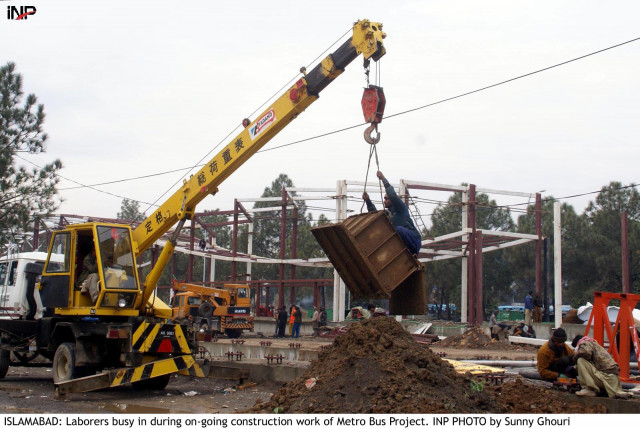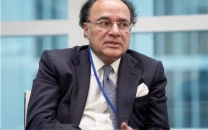Metro Bus Project: Massive infrastructure to complicate switch to rail system
CDA asked NESPAK, and later RDA, to vet project’s design to ascertain rail-line compatibility.

“Nespak is not bound to hire a third party to vet its design as per provisions of the agreement it signed,” Raza said, questioning why should we spend millions of rupees to hire international firms to satisfy CDA’s concerns. PHOTO: INP
Paved with tons of steel, the laid-down infrastructure for the metro bus, which costs an estimated Rs50 billion, will require massive modifications if authorities in future intend to convert it to the rail-based transit system.

Comprehending the technical faults, the Capital Development Authority asked the Rawalpindi Development Authority – which is executing the project – to hire an international consultant firm to vet the design to check whether it is consistent with a rail-based mass transit system.
The request was made following the National Engineering Services Pakistan (Nespak)’s refusal to entertain the request. Nespak has designed and is also responsible for the construction supervision of the metro bus project.
Delayed response
At the time of approval of PC-I of the project by the Central Development Working Party (CDWP) and the Executive Committee of the National Economic Council (ECNEC), Nespak representatives were questioned over the ambitiously high cost of the project.
“It (high cost) was justified by Nespak by saying that the ultimate objective of the design is to support future mode of public transportation — a rail-based mass transit system,” said a senior official of the authority, adding that the same justification also appeared in minutes of the meeting released by CDWP and ECNEC later.
Correspondence between different departments over the issue also suggests that in March 2014, CDA asked Nespak to engage an international consultant firm to vet the project’s design.
After a lapse of almost 10-months, Nespak responded by saying “At this belated stage [when the project is about to be completed] it’s almost impossible to vet the design. Nespak assures you [the CDA] that the design will support a rail-based transit system after minimum modification(s).”

Besides giving an assurance, Nespak also suggested in the letter that CDA, if it desires, could hire an international consultant firm for the vetting purpose and Nespak would have no objection over it.
“We can’t rely on mere assurances from Nespak. Though it’s a known firm it does not have any previous expertise in designing rail-based mass transit systems in Pakistan or anywhere else in world,” said the official.
Following the cold shoulder by Nespak, in the first week of January this year, CDA wrote to RDA to engage a consultant firm for the design vetting. “We are awaiting a response,” the official added.
Talking about the technicalities, the official said the under-construction project is designed for plying a maximum of 18-meter long buses while the minimum length of the rail-based transit system is 120 meters.
“The curves on the route are designed over a maximum radius for 18-meter long vehicles. The infrastructure will require massive modifications, contrary to claims of Nespak, if the authority intends to change the mode of public transportation at a later stage,” the official added.
Nespak’s project manager for Metro Bus project, Danish Raza, when contacted, said the infrastructure design is compatible to accommodate the rail-based transit system and the same has been conveyed to the capital’s civic agency. “But if it [the CDA] thinks otherwise it could hire some firm to remove doubts and we have no objection over it,” he said.
“Nespak is not bound to hire a third party to vet its design as per provisions of the agreement it signed,” Raza said, questioning why should we spend millions of rupees to hire international firms to satisfy CDA’s concerns.
But still, Raza added, Nespak is ready to cooperate with the CDA if vetting of the design is pursued till the end by CDA.
Published in The Express Tribune, January 19th, 2015.



















COMMENTS
Comments are moderated and generally will be posted if they are on-topic and not abusive.
For more information, please see our Comments FAQ